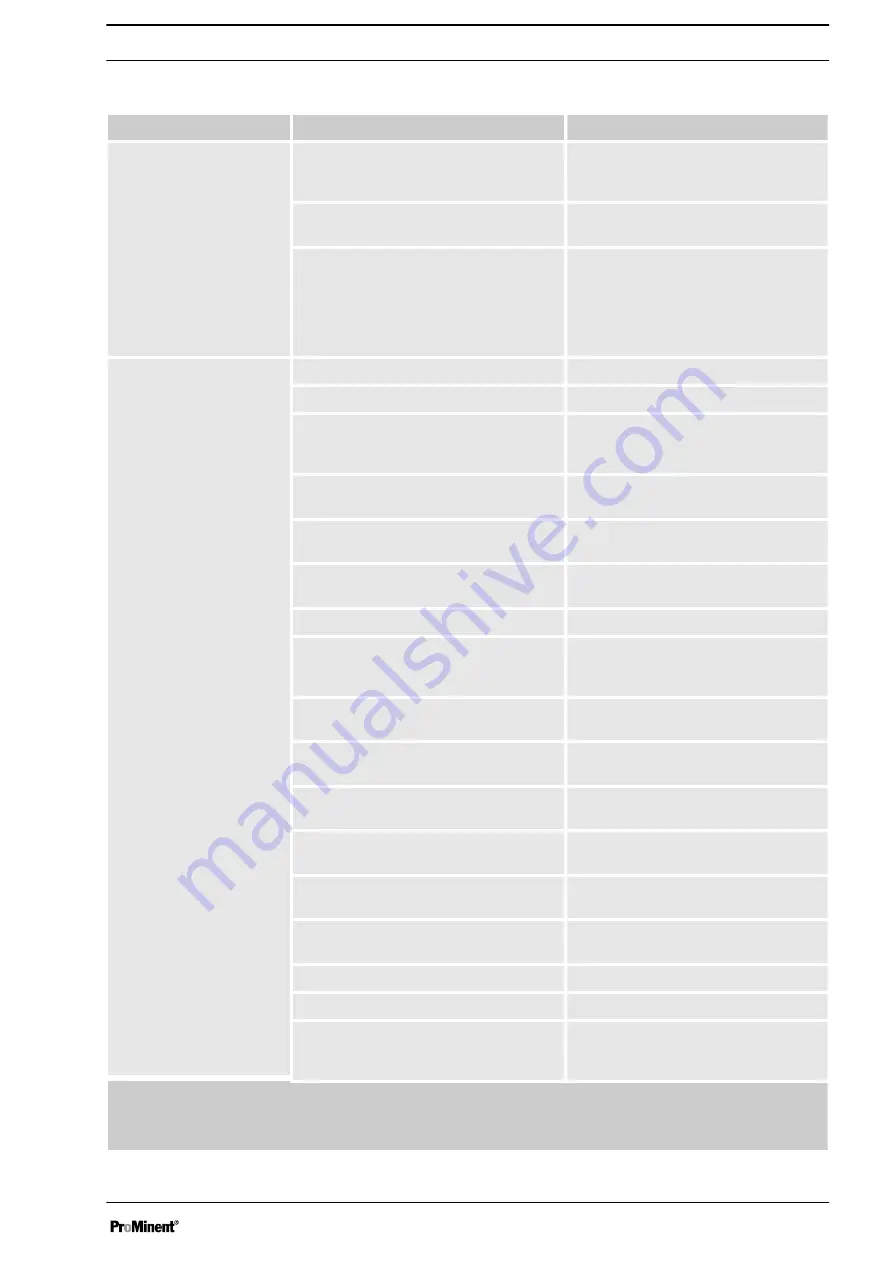
7.2 Troubleshooting
Fault
Possible cause
Remedy
Suction line contains gas
bubbles
Priming lift too high, operating condi‐
tions too close to the vapour pressure
of the medium
Reduce priming lift, use automatic
gas release, reduce temperature
Suction line leaks and is drawing air
Check negative pressure tightness
and connections, bleed line
Medium tends to be gaseous
Automatic gas release at the highest
point and in the dosing head, always
lay suction lines at a continuous
incline, avoid higher temperatures
and UV radiation, flush suction con‐
nector
Metering pump is not
pumping or indicates
decreased capacity
Suction line contains gas bubbles
See separate fault indication
Suction line is blocked
Remove blockage / dirt
Suction pressure required is too high
Modify suction line, use a wider
cross-section and/or use a priming
pulsation damper
Suction line contains gas bubbles
Bleed at the highest point, lay suction
line with a continuous incline
Flushing or drain open on the suction
side
Close flushing or drain tap on the
suction side
Shut-off valve on the evacuation tank
not closed
Close fitting and, if required, re-evac‐
uate the suction line
Tank and/or priming lift too high
Use priming aid
Empty alert and/or low flow contact trig‐
gered
Top up chemicals into the storage
tank: make sure that the level sensor
is immersed in the medium
Ball jammed/stuck in the metering
pump suction or discharge valve
Dismantle, clean and, if required,
replace valve
Ball dissolved in the suction or dis‐
charge valve
Replace valve and check resistance
Diaphragm tear / diaphragm rupture
sensor activated
Replace diaphragm and sealing set
Opening pressure of the relief valve /
safety valve too low
Correctly set the opening pressure
Open flushing and drainage connection
on the discharge side
Close flushing and drainage connec‐
tion
Air in the discharge line
Bleed metering line at the highest
points
Metering line ruptured
Correctly repair the metering line
Shut-off valve closed (discharge side)
Open shut-off valve
Metering line blocked
Rectify blockage, check opening
pressure of the relief valve and/or
safety valve
The table does not claim to be complete.
Further reasons for failure and detailed information on the causes of faults can be found in the operating
instructions for the individual components.
Maintenance and Troubleshooting
31
















































